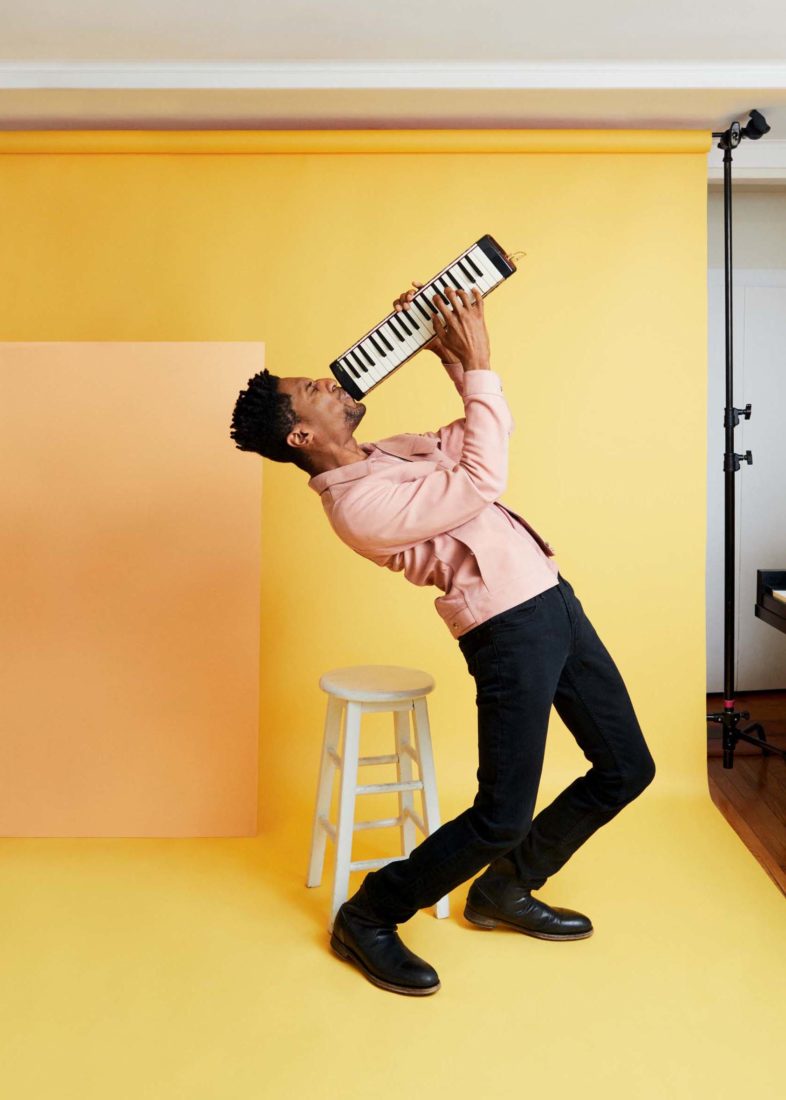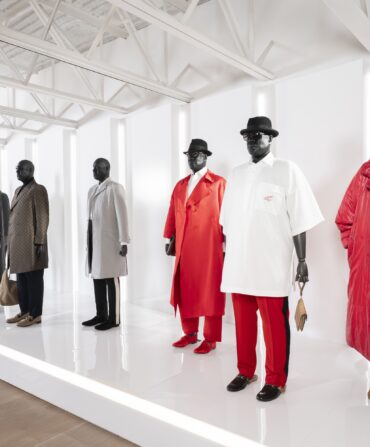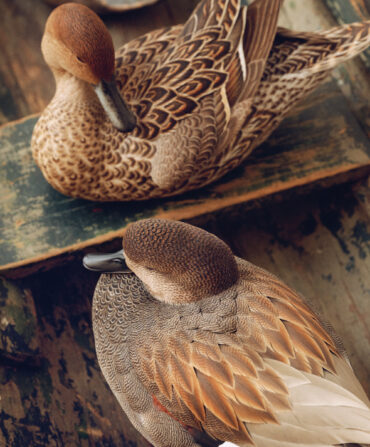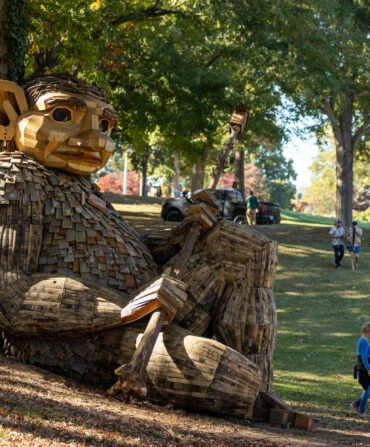Jon Batiste’s professors at the Juilliard School in New York were so disturbed by it that they called in a psychotherapist. One of his hometown mentors, the jazz icon Wynton Marsalis, was likewise appalled. “Get that thing off the stage,” he’d gripe. Even workaday subway riders, herding past Batiste’s underground performances, might’ve thought something was off-kilter, unusual, all that incredible virtuosity funneled into…what’s that thing even called, anyway?
“Melody horn, melodion, harmonichord, mouth piano…” Batiste is inventorying the names for the peculiar instrument in his hands, the source of all that former tension but also, more important, almost lifelong delight. “If you look online,” he says, “there’s even more.” Indeed there are: pianica, melodihorn, triola, hooter, piano horn, and the rather sultry-sounding orgamonica. But most players, Batiste included, call it a melodica.
Few if any players, however, have devoted as much passion and energy to the instrument—and derived so much obstinate joy from it—as Batiste. The thirty-four-year-old Louisiana native is a wearer of many feathered caps: bandleader, since 2015, for The Late Show with Stephen Colbert; Oscar- and Golden Globe–winning film composer (for Pixar’s Soul); jazz piano prodigy turned master, with more than a dozen albums and EPs stretching back to his teens (including 2019’s Grammy-nominated Chronology of a Dream: Live at the Village Vanguard); actor (David Simon’s Treme and Spike Lee’s Red Hook Summer); symphonic composer (his American Symphony debuts at Carnegie Hall this year); educator (he’s the co–artistic director of the National Jazz Museum in Harlem); and activist (the protest marches he led in the wake of George Floyd’s killing fueled the songwriting on We Are, his most recent album). But close to Batiste’s heart is another, less heralded role: evangelist and ambassador for this many-named German instrument that resembles the offspring of a piano and a kazoo and that finally, in his hands, is getting the respect and exposure it deserves.
“It’s still very much an underground instrument,” Batiste says. He’s standing in the garage of his house on a rural New Jersey back road, plucking half a dozen melodicas from a moving box. Batiste and his longtime partner, the writer Suleika Jaouad, recently traded their New York apartment for a patch of countryside; cardboard boxes still linger. This box, however, has a special resonance: It’s the repository for a stubborn love that began, way back when, with a consolation gift from his father.
The year was 1993. As the bassist for the Batiste Brothers Band, Jon’s father, Michael, was jetting to Japan for a gig. (Batiste descends from one of those musical families, like the Marsalises and Nevilles, threaded into the very DNA of New Orleans music.) Jon, who at seven was already performing with his family some, wanted desperately to come along. Though not because he wanted to be onstage. “Japan,” he explains, “was the land of Nintendo.” Where he remained, however, was in the land of second grade. Batiste père returned bearing gifts. Among them, for Jon, was a melodica—a ubiquitous classroom instrument in Japan, but, for a boy in Louisiana, an object of wild fascination. “That was the beginning,” he says.
That first melodica’s not in the moving box; it’s back at the family homeplace in Kenner. What is here, though, is a hand-painted relic from the next chapter in Jon Batiste’s melodica odyssey—“the era of the subway,” as he puts it. He brings it to his lips and pipes out a quick bluesy run. Festooned with his name amid black and lime-green patterns painted by a friend, the thirty- two-key Hohner model is emblematic of Batiste’s near-constant sidearm when he was studying piano at Juilliard by day and—on street corners and in subways and jazz clubs—mastering the melodica by night.
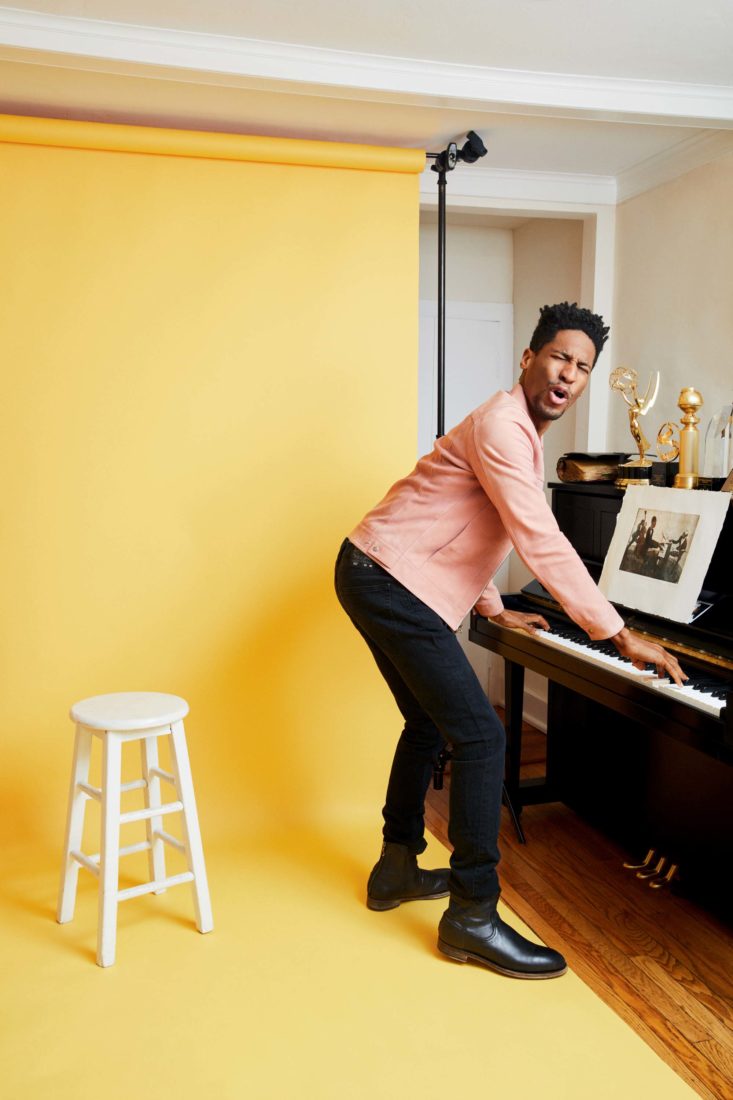
Melodicas can be played in one of two ways. The first is to blow into a long plastic tube connected to the instrument, which can be set level with the keyboard visible to the player and with both of his or her hands free to navigate it. The effect is something like a musical hookah pipe. The second way—Jon’s—is to eschew the tubing and blow it like a trumpet, fingering the keys with one’s right hand while—if you’re Jon Batiste—dancing, discoing, duckwalking, and otherwise distributing the groove throughout your entire body. The sound a melodica produces is reedy and expressive, similar to a harmonica but without so much of the overtones and glissandi—like a harmonica played with uncanny precision.
It’s not entirely unknown in popular music. The late Augustus Pablo introduced it to reggae and dub in the 1970s. Steely Dan’s Donald Fagen toots one on occasion. Stevie Wonder told Batiste he used to play one but didn’t like the way it clogged with saliva (melodicas do require draining). But like its cousins the harmonica and the accordion, the instrument often gets seated at the kids’ table—scorned as an unserious folk instrument or, worse yet, as a toy. Suffice it to say that it wasn’t what you wanted to go around playing nonstop in the very serious halls of Juilliard, even if the cafeteria ladies loved it so much that they rewarded you with free food.
“The teachers in the school started saying, ‘That boy has lost his mind,’” Batiste recalls. “I even had to get a psychiatric exam.” The institutional disdain, he says, was partly musical; snobbery, after all, is endemic to conservatory life. Playing for free in the subways, haunting empty jazz clubs in the wee hours, diverting even any energy from the rigors of his piano study: “All that was looked down upon,” he says. Yet the frowns had another source, he believes: “The fact that I’m Southern.” His New Orleans accent is deep and melodious; back then, it was even deeper. “There were no people who spoke like I spoke at Juilliard at that time,” he says. “There weren’t a lot of people I could point to who sounded like Willie up the block. Everything about me was just like, This guy’s a sore thumb.” He’s laughing as he says this—that big staccato laugh familiar to television viewers. “It wasn’t funny at the time,” he allows, “but in retrospect it’s hilarious.”
Equally funny—now but not then—was Wynton Marsalis’s allergic reaction to Batiste’s melodica playing. Marsalis feared he was wasting his talent on a toy, Batiste says. “He’s the biggest jazz star in the world. The guy. And he’s saying, ‘Don’t play that.’” The two of them laugh about it now. Back then, however: “I would just clench,” he says, “and keep it.” That’s because the melodica brought him joy. And, increasingly, it was bringing audiences joy. The jazz clubs, where he’d lead off with a melodica rendition of Thelonious Monk’s “’Round Midnight,” backed by the earliest members of his Stay Human band, were no longer empty but instead packed. The Lower East Side street corners, where the band staged the guerrilla concerts that Batiste would come to call “love riots,” were swelling with crowds.

He pulls another melodica from the box, a Suzuki soprano model that’s another heirloom from the subway era. Unlike, say, vintage guitars, melodicas don’t hold much intrinsic value. They’re mass-produced, not handcrafted. Most are made of plastic. When the reeds go flat, as they inevitably do, it’s usually time for a new one. For Batiste, however, each one in his collection is a madeleine, a portal back to a moment in time. That late night on Ludlow Street when an audience of hundreds snarled traffic and the police broke it up, blue lights everywhere, amid chants for one more song. That appearance on a television show he’d never heard of, The Colbert Report, when Batiste and the band second-lined the audience out of the studio and onto the sidewalk and into Stephen Colbert’s heart. The march through Manhattan that he led last summer, decrying injustice with song, fusing street protests with the jazz funeral. Or that 2008 NBA All-Star Game halftime show when the “youngster,” as Harry Connick Jr. dubbed him, was included in a performance medley by New Orleans’ piano titans—Connick Jr., Ellis Marsalis, Dr. John, Art Neville, and, across from Batiste, dueling pianos–style, Allen Toussaint—and what did he do? Whipped out a melodica during the closing breakdown, unannounced, unrehearsed, because maybe the only response to that much sonic joy is to add another layer of sonic joy, to dash in some of your own seasoning mix, to make the funk somehow funkier.
“A lot of times,” he says, “the culture needs to be shook up.” Batiste continues to shake it every which way he can. But he’s especially proud, as the array of melodicas loosens more memories, of the decade-old judder he gave the New York jazz scene, the way he helped pivot the music back toward its New Orleans roots and rejuvenated it with that so-called toy. “Because ten years later I see musicians who are not from New Orleans, not from the South, adopting things that we did in clubs and other venues and it’s like, Oh yes,” he says, smiling. “That helped the culture. That helped something.”


